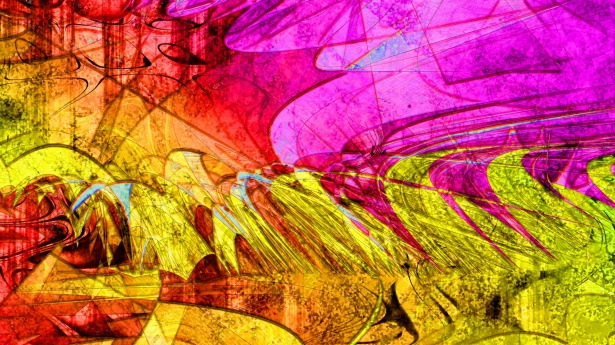We are in an age where the internet can adjust people’s opinions, and contemporary art has become a prime example. From viral TikToks being captioned, “Contemporary art is so lifeless and boring” to just heated debates on other social media platforms that argue about the true “meaning of art”. This makes a question pop up in someone’s mind: is contemporary art hate necessary?
Lately, people have been noticing the term contemporary art and questioning the art pieces that fall under this term.
There has been a trend of people making videos on the internet, specifically videos that are captioned, “standing next to art I think I could make”. In these videos, people are standing next to art pieces, generally ones that are very abstract where the meaning doesn’t jump out at you. There have also been videos of people criticizing the art pieces that others have made and have been put into museums.
Many people on social media have been making comments about the art pieces that other artists have made, saying that “the art doesn’t have meaning,” or something like “It’s just nonsense on a canvas.” Surprisingly, many people seem to believe this.
There could be reasons why people hold these beliefs about many art pieces that are considered contemporary art, but let’s not forget the meaning of why art is created in the first place.
People don’t always understand how art could be so abstract and hard to catch the meaning of. The reason why people sometimes dislike contemporary art is because it’s art pieces that don’t seem eye-appealing to them.
Here’s an example. An art piece made by Yves Klein, titled “Blue Monochrome” is a canvas that is fully painted blue, having nothing else on it. This art piece recently became popular due to somebody uploading a video of a trend that went viral on TikTok which was captioned “standing next to art we think we could do.”
Yves Klein’s art piece wasn’t the most eye-catching for people, but the reason why it’s in the MoMA Museum in New York in the first place is because of the backstory.
Yves Klein was a brilliant French artist and he had made a collection of monochrome paintings with this specific color in his piece “Blue Monochrome”. He had been obsessed with the color blue ever since Yves had recognized the deep blue skies of the French Mediterranean.
One day, through the mid-late 1950s, Klein met a chemist named Édouard Adam, to help him achieve a perfect blue formula that could maintain its brilliance. They both experimented with ultramarine and mixed pigments, which led to his famous pigment color, “International Klein Blue”.
It took him years to create this beautiful blue pigment before he succeeded and officially finished it in 1960. This pigment shade is extremely difficult to replicate. By this time, it hadn’t even existed in paints, making it hard for people to paint with Klein Blue.
Even though it doesn’t have a super deep meaning, it’s still interesting to learn this if you do research on art pieces and find out the reasons why they have been created by artists.
This strong dislike for contemporary art is deeply rooted in made-up misconceptions. Many people view it as overambitious and unattainable, but this mainly forgets the meaning behind contemporary art’s purpose: to challenge our insight of the piece and allow us to think on the farther side of traditional boundaries.
Yves Klein’s “Blue Monochrome” is an amazing example of this idea; the art piece isn’t just about the appearance and whether it’s eye-appealing, it’s about the observation of this piece. This piece encourages viewers to focus on the blue pigment as a conceptualization, to understand its intensity, and to understand the emotion and hard work it’s portraying.
Klein had wanted his art to be noticed in a way where viewers were inspired to come up with thoughts about the work he made, the unlimited and the irrelevant.
The idea of “Blue Monochrome” is its power. Other people might brush it off as “a piece of art that anybody could do”, but the work, the process, and the meaning behind it could reveal the depth of the art piece. This “International Klein Blue” that Yves Klein had created, had become an outline within Klein’s vision as a method of capturing the aspects of art like his.
In the end, “Blue Monochrome” and other art pieces separate each other from the idea of “what art should look like”. They help us explore deeper meanings and inspire us by the feelings the art provides. Art, as many other artists and Klein believed, shouldn’t be about the representation of the work that artists have done—it could be about the existence, imagination, and spirit that it gives others through their experience.
“Blue Monochrome” is not just a color on a canvas, but an experience that others could feel, the energy that it could offer, and an opening mind for observation.
































